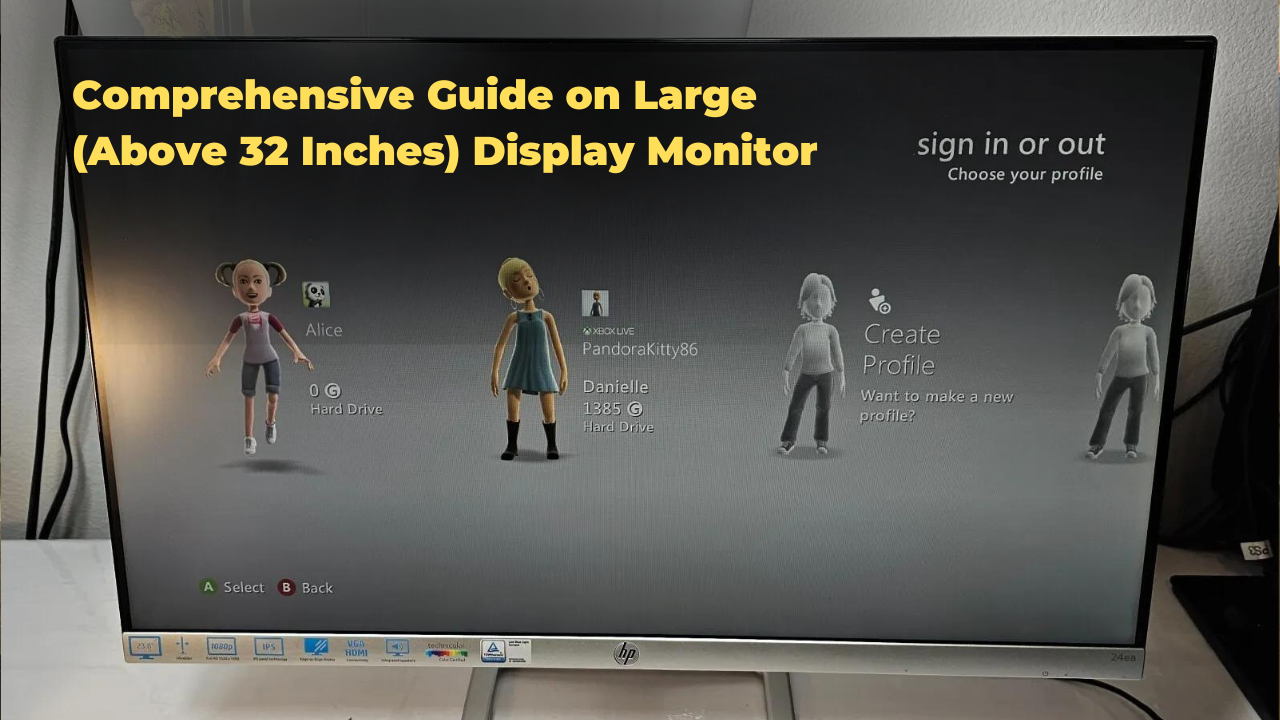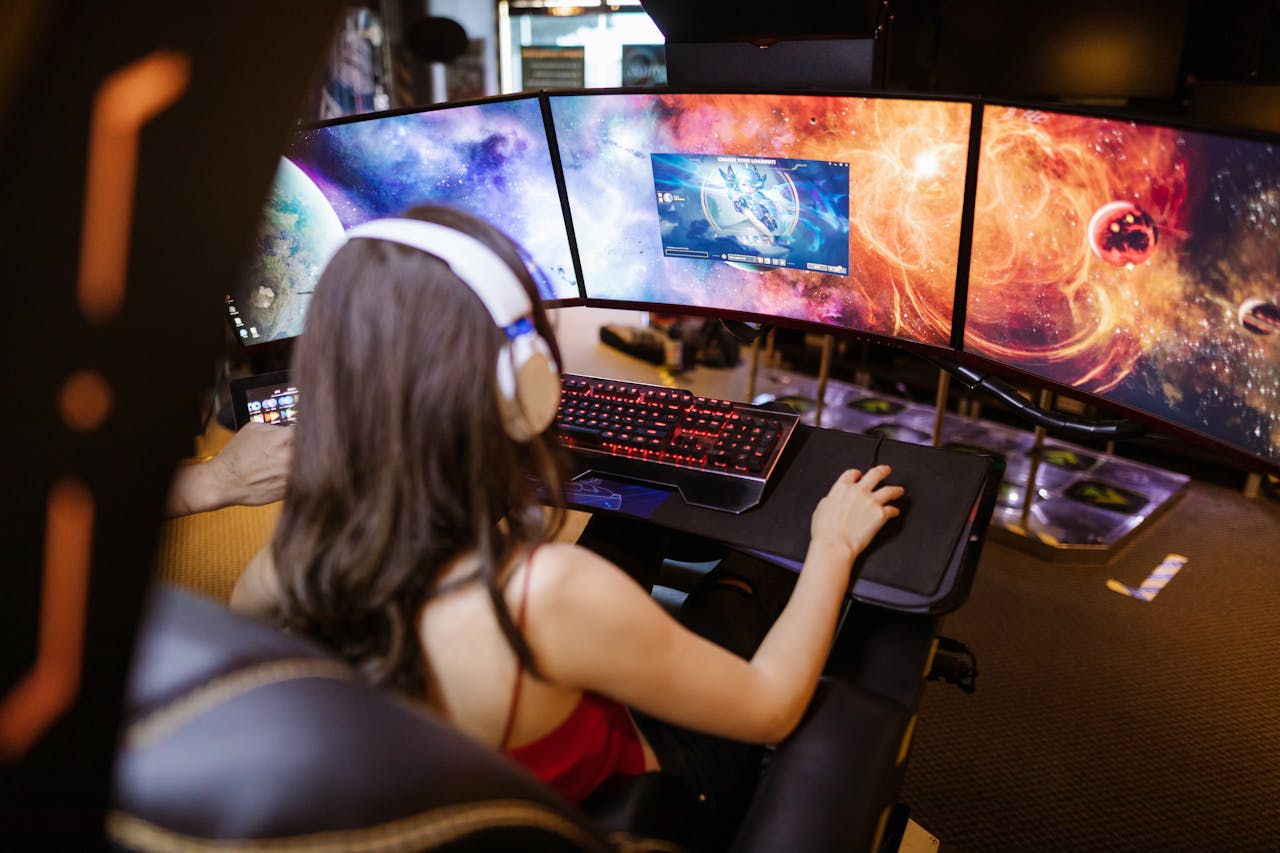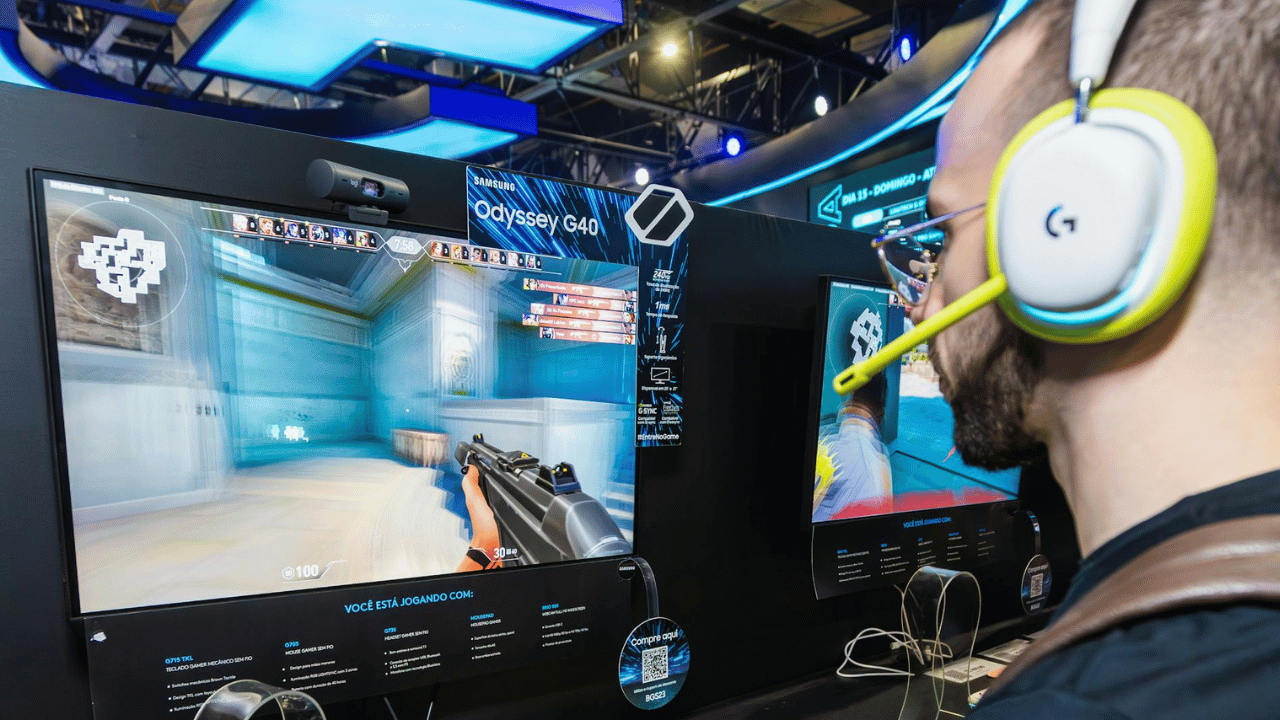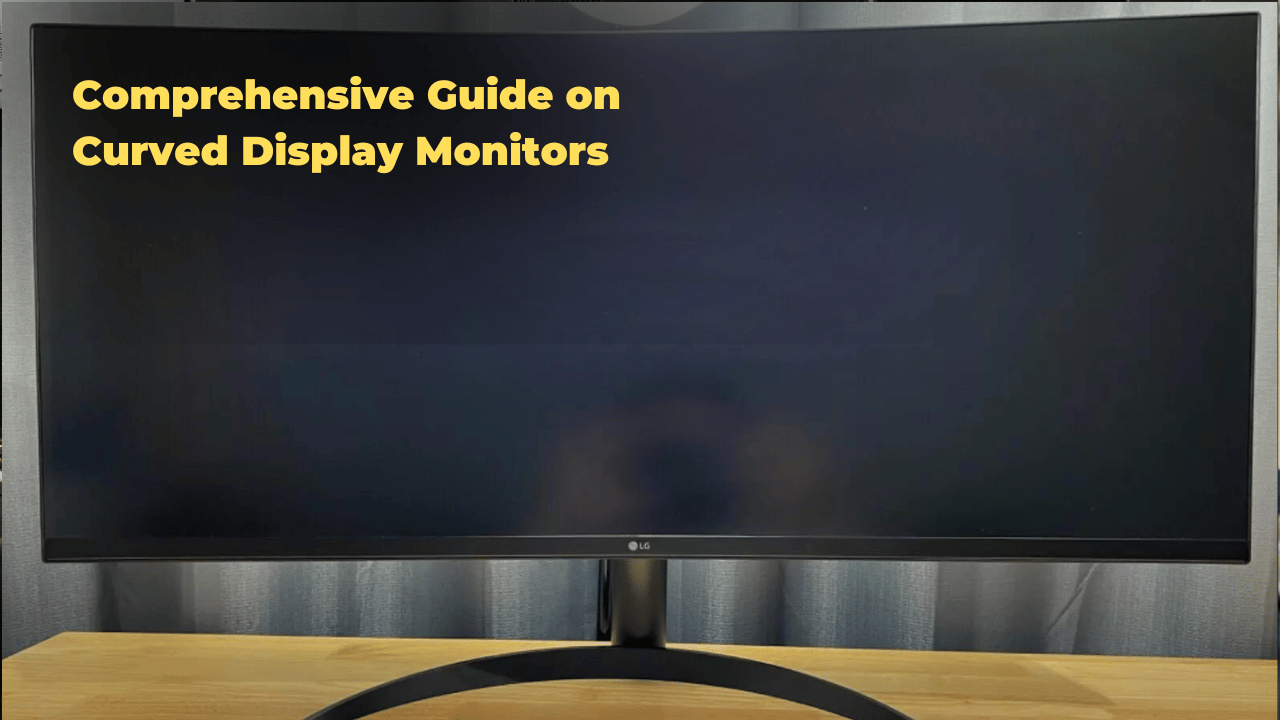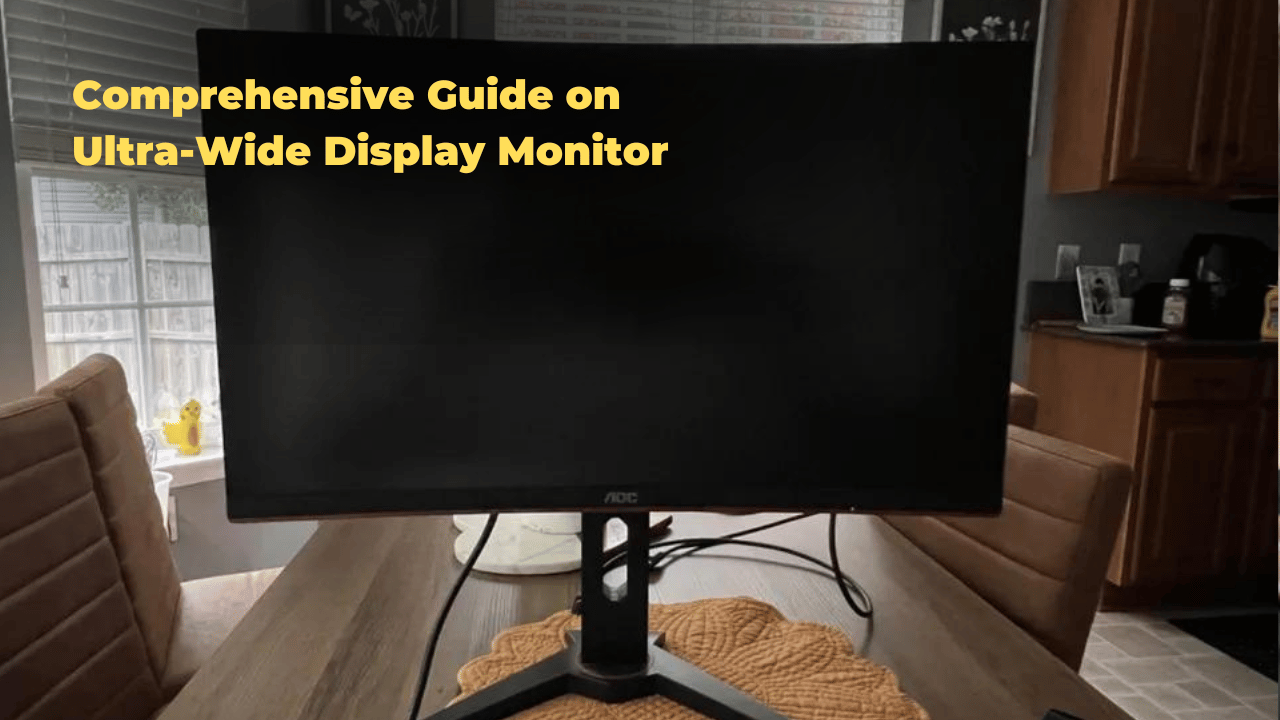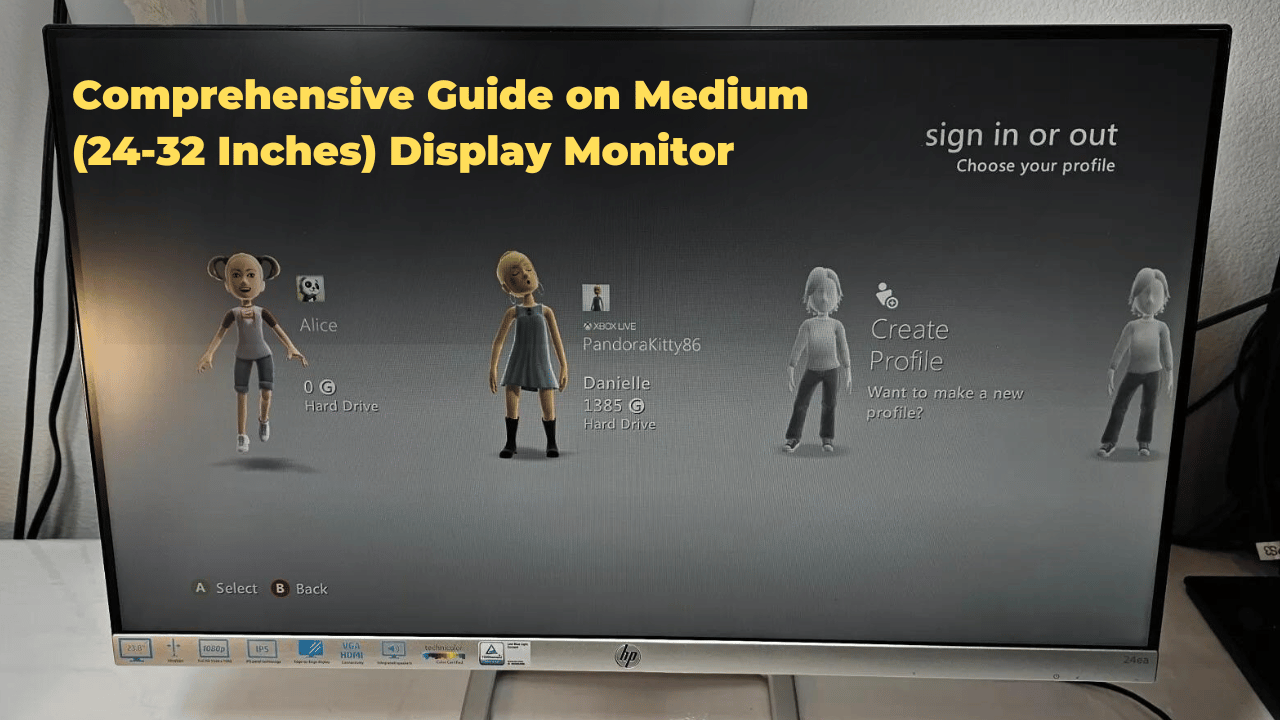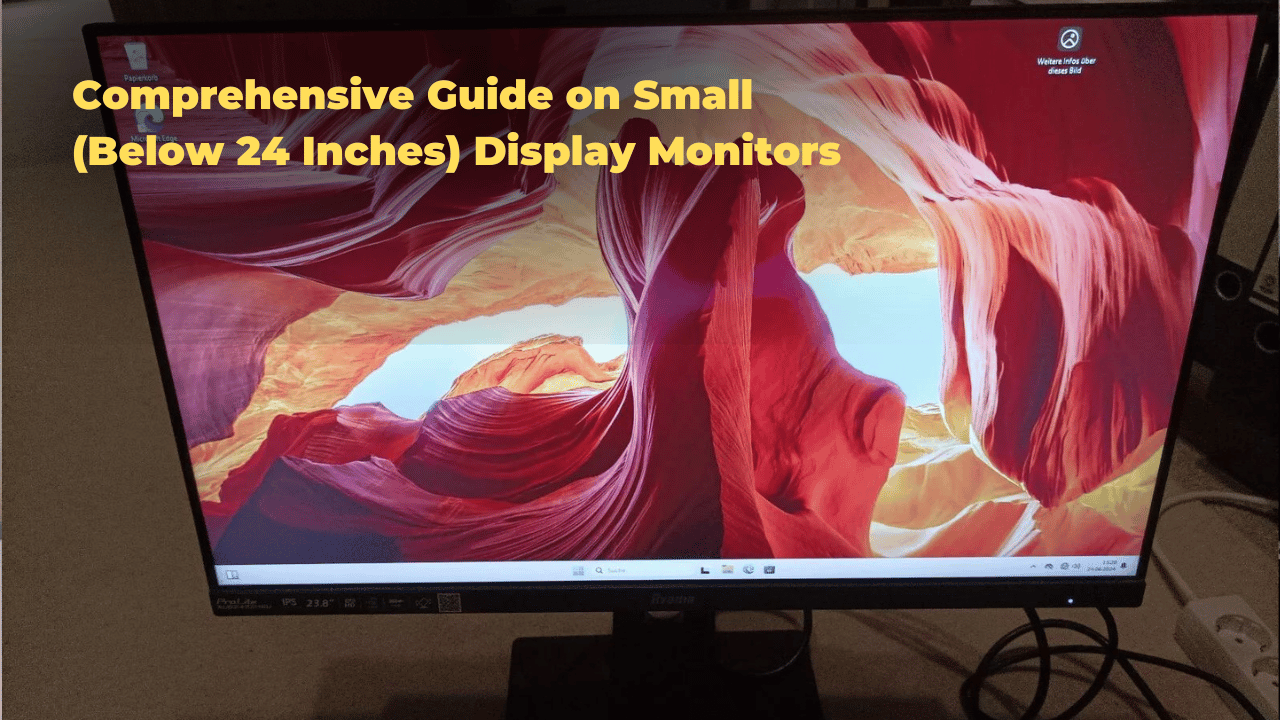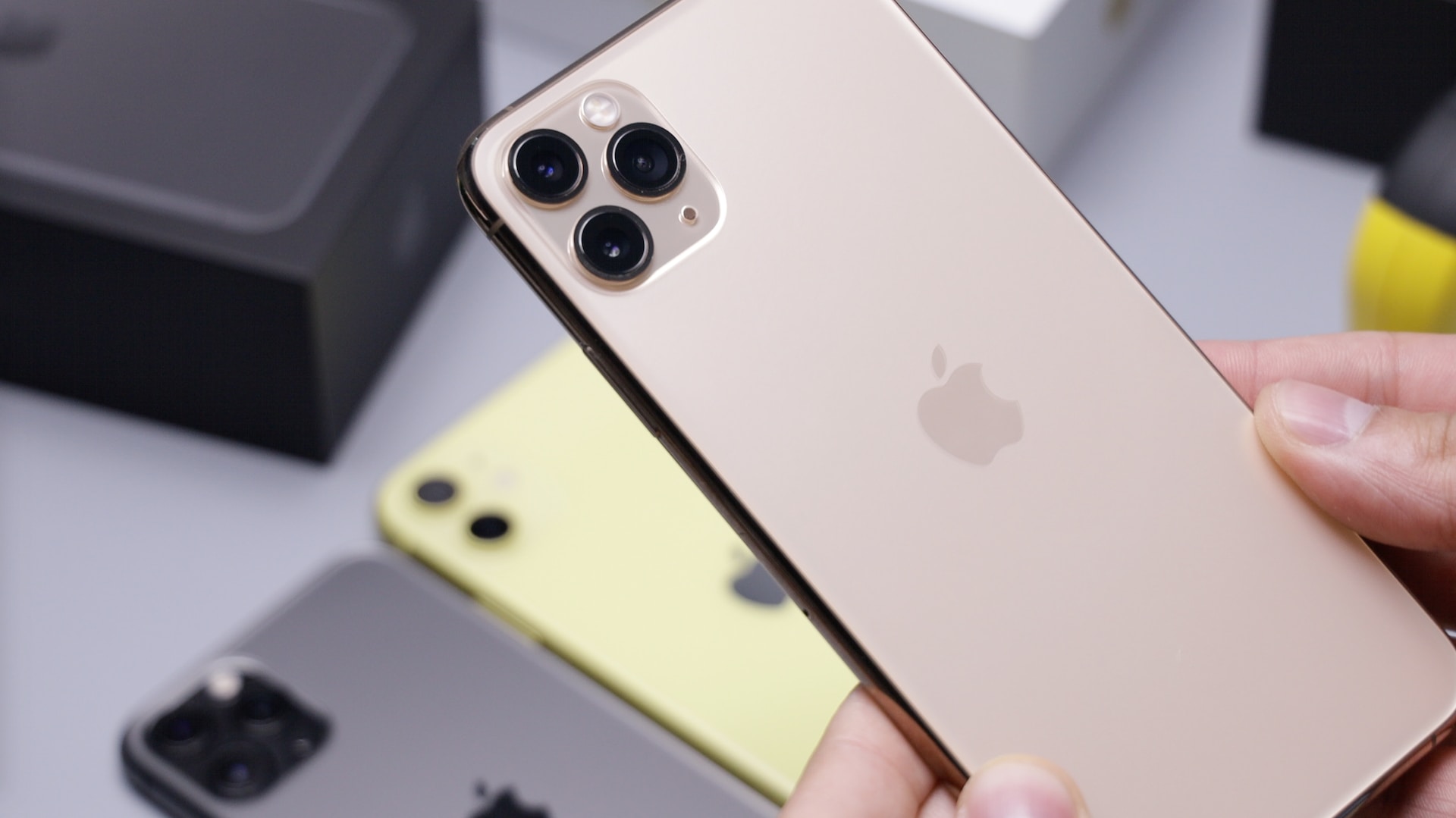When selecting a large screen monitor above 32 inches, several key factors must be considered to ensure an excellent viewing experience. Display size and aspect ratio are essential, with 16:9 being ideal for cinematic experiences. Resolution and refresh rate also play a significant role, with higher resolutions and faster refresh rates providing more detailed images and smoother motion.
Panel type, color accuracy, and connectivity options are equally important, as are ergonomic design and adjustability features. Additionally, budget and value considerations come into play. By examining each of these factors, you can make an informed decision and maximize the potential of your large screen monitor.
Key Takeaways
- Optimize Viewing Distance: Ensure 5-6 feet for 40-inch monitors and 7-8 feet for 50-inch monitors for an immersive experience.
- Aspect Ratio Matters: Choose 16:9 for cinematic experience or 4:3 for productivity, depending on your use case.
- Resolution and Refresh Rate Balance: Select 144Hz or 240Hz for gaming and 60Hz for graphic design, balancing performance and visual quality.
- Panel Type Selection: IPS offers wide color gamut and viewing angles, while TN provides cost-effectiveness and quicker response times, choose based on your needs.
- Ergonomic Design Essentials: Prioritize height adjustability, tilt functionality, and cable management for optimal viewing comfort and reduced strain.
- Refresh Rate Requirements: Identify your refresh rate needs, 144Hz or 240Hz for fast-paced content and 60Hz for general use.
- Display Size Considerations: Weigh the benefits of larger displays (40-inch, 50-inch) against your budget and viewing distance.
- Color Gamut and Accuracy: IPS and VA panels offer improved color accuracy, while TN panels provide faster response times, choose based on your priorities.
- Connectivity and Compatibility: Ensure your monitor has the right ports (HDMI, DisplayPort, USB) for your devices and peripherals.
- Budget and Value: Balance your budget with the features and performance you need, considering the total cost of ownership.
Popular Large Gaming Monitor Features
| Feature | Description | Benefit |
|---|---|---|
| Display Size | 34″ – 49″ and above | Increased field of view for a more immersive experience |
| Panel Type | IPS, VA, OLED | IPS offers best color accuracy, VA offers high contrast, OLED provides superior viewing angles and black levels |
| Resolution | Full HD (1920×1080), WQHD (3440×1440), 4K (3840×2160) | Higher resolution means sharper images and more detail |
| Refresh Rate | 144Hz, 240Hz or higher | Higher refresh rate delivers smoother gameplay and reduces motion blur |
| Response Time | 1ms or less | Faster response time minimizes ghosting and trailing during fast-paced action |
| HDR (High Dynamic Range) | Improved contrast, brighter whites, and deeper blacks | More realistic and immersive visuals |
| G-Sync/FreeSync | Adaptive sync technology eliminates screen tearing and stuttering | Smoother and more enjoyable gameplay |
| Curved Screen | Creates a more immersive viewing experience by wrapping around the user’s field of view | Feels more natural and engaging |
Popular Large Gaming Monitor Brands
| Brand | Examples |
|---|---|
| Asus ROG | ROG Strix XG43UQ, ROG Swift PG42UQ |
| Samsung Odyssey | Odyssey Neo G9, Odyssey G9 |
| LG UltraGear | 38GN950, 48GQ900-B |
| MSI | Optix MPG341CQR, MEG381CQR |
| Acer Predator | X34 GS, Nitro XV431CKP |
| Alienware | AW3423DW, AW5520QF |
Display Size and Aspect Ratio
Screen Size and Viewing Distance: A Delicate Balance
The physical dimensions of a large display monitor, particularly its display size, play a crucial role in determining the overall viewing experience. A larger screen size can provide an immersive experience, but it also requires a suitable viewing distance to avoid pixelation and eye strain. For instance, a 40-inch monitor is ideal for a viewing distance of around 5-6 feet, while a 50-inch monitor requires a minimum distance of 7-8 feet.
Aspect Ratio: A Critical Factor in Screen Format and Pixel Density
The aspect ratio of a large display monitor is also significant, as it affects the screen format and pixel density. A 16:9 aspect ratio, commonly found in widescreen monitors, provides a cinematic experience and is suitable for watching movies and gaming. On the other hand, a 4:3 aspect ratio is more appropriate for productivity and office work. A higher pixel density, typically measured in pixels per inch (PPI), ensures a sharper and more detailed image. For large display monitors, a minimum pixel density of 100 PPI is recommended to maintain image quality.
Selecting the Ideal Display Monitor: Considering Screen Size, Aspect Ratio, and Intended Use
When selecting a large display monitor, it is essential to contemplate the screen size and aspect ratio in conjunction with the intended use and viewing distance. By doing so, users can optimize their viewing experience and guarantee that their device meets their specific needs.
Recommended Pixel Density for Large Display Monitors
| Screen Size | Recommended Viewing Distance | Minimum Pixel Density |
|---|---|---|
| 40-inch | 5-6 feet | 100 PPI |
| 50-inch | 7-8 feet | 100 PPI |
Note: The recommended pixel density is based on general guidelines and may vary depending on individual preferences and specific use cases.
Remember to consider your specific needs and preferences when selecting a large display monitor to ensure an optimal viewing experience.
Resolution and Refresh Rate
Understanding Resolution for Crisp Displays
A higher resolution, such as 4K (3840 x 2160 pixels) or QHD (3200 x 1800 pixels), offers a more detailed and crisp image, making it ideal for graphic design, color reproduction, and other applications that require high-quality visuals. On the other hand, a lower resolution, such as Full HD (1920 x 1080 pixels), may be adequate for general use, but may not offer the same level of clarity.
The Impact of Refresh Rate on Motion Smoothness
The refresh rate, measured in Hertz (Hz), affects the smoothness of motion on the screen. A higher refresh rate, such as 144Hz or 240Hz, is beneficial for fast-paced activities like gaming, as it reduces screen tearing and motion blur. This is particularly significant for larger screen sizes, where motion blur can be more noticeable. For graphic design and video editing, a lower refresh rate, such as 60Hz, may be sufficient, as the emphasis is on color accuracy and image quality rather than fast motion.
Selecting the Ideal Monitor for Your Needs
When selecting a large display monitor, it’s crucial to take into account both the resolution and refresh rate to guarantee peak performance for your specific requirements. For instance, if you’re a gamer, a high refresh rate and fast response time are vital for smooth gaming performance. On the other hand, if you’re a graphic designer, a high resolution and precise color reproduction are more crucial. By recognizing the significance of resolution and refresh rate, you can make an informed decision when choosing a large display monitor.
Comparison of Resolution and Refresh Rate Options
| Resolution | Refresh Rate | Ideal Use Case |
|---|---|---|
| 4K (3840 x 2160) | 144Hz | Graphic design, color reproduction, gaming |
| QHD (3200 x 1800) | 144Hz | Graphic design, color reproduction, gaming |
| Full HD (1920 x 1080) | 60Hz | General use, video editing |
Note: The above table is a general guideline and may vary depending on specific use cases and individual preferences.
Panel Type and Color Accuracy
Influence of Panel Type on Color Precision
Panel type significantly influences color precision, with various technologies like TN, IPS, VA, and OLED offering distinct strengths and weaknesses concerning color gamut, brightness, and viewing angles.
IPS vs TN Panels: Color Precision and Viewing Angles
In-Plane Switching (IPS) and Twisted Nematic (TN) panels are two common types found in large display monitors. When it comes to color accuracy, wide viewing angles, and good brightness, IPS panels shine. This makes them ideal for professionals who need to see colors precisely. On the other hand, TN panels are easier on the wallet and offer faster response times. However, they might not be the best for super accurate colors or viewing from all angles.
Color Gamut and Color Space Coverage
When it comes to color precision, IPS panels generally surpass TN panels. IPS panels can showcase a broader spectrum of colors, with some models encompassing up to 99% of the Adobe RGB color space. In contrast, TN panels typically cover approximately 70-80% of the sRGB color space.
Optimizing Color Precision with Calibration Techniques
Both panel types can benefit from color calibration techniques, such as ICC profiling and color space calibration, to optimize their color precision. These techniques can help to guarantee that the monitor is displaying colors precisely and consistently, which is crucial for professionals working in areas like graphic design, photography, and video production.
Choosing the Right Panel Type for Your Needs
Ultimately, the decision between IPS and TN panels depends on the user’s specific requirements and priorities, with IPS being the superior choice for those who necessitate high color precision and TN being a more cost-effective substitute.
Color Accuracy Comparison Chart
| Panel Type | Color Gamut | Color Space Coverage |
|---|---|---|
| IPS | Wide | Up to 99% Adobe RGB |
| TN | Narrow | Approximately 70-80% sRGB |
Note: Color calibration techniques can help optimize color precision for both IPS and TN panels.
Connectivity and Compatibility Options
Seamless Connectivity for Enhanced Productivity
Beyond color accuracy, large display monitors must accommodate a variety of wireless connection options, such as built-in Wi-Fi, Bluetooth, or exclusive wireless technologies, to enable cable-free connections. This feature is particularly beneficial for presentations, streaming, and collaborative tasks.
Device Compatibility for Flexibility
Device compatibility is a crucial aspect to consider when selecting a large display monitor. Ensure the monitor is compatible with your devices, including laptops, desktops, gaming consoles, and mobile devices. A monitor that supports multiple operating systems, such as Windows, macOS, and Chrome OS, offers greater flexibility and convenience.
Cable Options for Convenience
Check for cable options, including HDMI, DisplayPort, USB-C, and VGA, to ensure you can connect your devices using the cables you possess. Screen mirroring technology, such as Miracast or Chromecast, is also a valuable feature that enables you to wirelessly mirror content from your devices to the monitor.
Ergonomic Design and Adjustability
Height Adjustability for Neck and Shoulder Relief
A well-designed ergonomic monitor stand is necessary for the best viewing comfort, allowing users to adjust the display to their preferred height, reducing strain on the neck and shoulders. A large display monitor with height adjustability enables users to position the screen at an ideal viewing angle, minimizing eye strain and boosting productivity.
Tilt Functionality for Customized Viewing
Tilt functionality is also essential, as it allows users to fine-tune the display’s angle to suit their line of sight. This feature is especially significant for large monitors, which can be prone to glare and reflections.
Cable Management for a Clutter-Free Workspace
In addition to ergonomic considerations, a well-designed monitor stand should also prioritize cable management. A clutter-free workspace is vital for productivity, and a monitor stand with built-in cable management features can help keep cables organized and out of sight.
VESA Compatibility for Mounting Flexibility
Moreover, VESA compatibility is a critical consideration for large display monitors, as it enables users to mount the display to a wall or desk, freeing up valuable space and promoting a more ergonomic workspace.
Ideal Viewing Comfort and Productivity
When evaluating a large display monitor, look for a stand that offers a combination of height adjustability, tilt functionality, cable management, and VESA compatibility to guarantee ideal viewing comfort and productivity. By emphasizing ergonomic design and adjustability, users can create a comfortable and efficient workspace that enhances their overall viewing experience.
Key Features to Consider:
| Feature | Importance |
|---|---|
| Height Adjustability | Reduces neck and shoulder strain |
| Tilt Functionality | Minimizes glare and reflections |
| Cable Management | Promotes a clutter-free workspace |
| VESA Compatibility | Enables flexible mounting options |
Note: The importance of each feature is based on the context of the content and may vary depending on individual user needs.
Additional Features and Accessories
Cable Management Systems for a Clutter-Free Workspace
Several large display monitors come equipped with cable management systems, such as cable ties or clips, to keep cables tidy and out of sight. This is particularly important for large monitors, which often require multiple cables to function.
Protecting Your Investment with Screen Protectors
Screen protectors can help protect the monitor’s display from scratches and damage. These protectors can be especially useful for users who work in high-traffic areas or share their monitor with others.
Customizable Mounting Options for Optimal Viewing
Some large display monitors offer mounting options, such as VESA mounts or adjustable stands, which allow users to customize the monitor’s position and angle to suit their needs. This can be particularly beneficial for users who require a specific viewing angle or need to mount the monitor to a wall or desk.
Budget and Value Considerations
Brand Comparison for Best Value
When choosing a large display monitor, budget and value considerations play a significant role in determining the ideal choice, as even slight variations in price can impact the features and performance offered. A thorough brand comparison is necessary to identify the best value for money. For example, a monitor from a well-known brand like Samsung or LG may offer superior screen quality and durability compared to a lesser-known brand, justifying a slightly higher price tag.
Warranty Coverage and Customer Reviews
Warranty coverage is another important aspect to keep in mind. A detailed warranty that covers repairs and replacements for an extended period can provide peace of mind and protect your investment. Customer reviews and ratings can also provide valuable insights into the monitor’s performance, reliability, and overall user experience. Make sure to read reviews from multiple sources to get a well-rounded understanding of the product.
Setting a Realistic Budget and Prioritizing Needs
When it comes to budget, setting a realistic price range and prioritizing your needs is crucial. If you’re in the market for a monitor primarily for gaming or video editing, you may need to invest in a higher-end model with advanced features like 4K resolution, high refresh rates, and fast response times. On the other hand, if you’re looking for a monitor for general use, such as web browsing and office work, a more affordable option may suffice.
Balancing Budget and Performance
| Monitor Use Case | Budget Considerations | Recommended Features |
|---|---|---|
| Gaming | Higher-end budget | 4K resolution, high refresh rates, fast response times |
| Video Editing | Higher-end budget | 4K resolution, high refresh rates, fast response times |
| General Use | Affordable budget | HD resolution, standard refresh rates, standard response times |
Frequently Asked Questions
What are the benefits of using a large monitor for gaming?
Large monitors offer a wider field of view, increased visual detail, and a more immersive gaming experience.
What are the different types of large gaming monitors?
There are two main types: ultrawide monitors with a wider aspect ratio (21:9 or 32:9) and superwide monitors with a similar aspect ratio to traditional monitors (16:9) but a larger screen size (43″ or above).
What resolution should I choose for a large gaming monitor?
WQHD (3440×1440) is a good balance between resolution and performance, while 4K (3840×2160) offers the sharpest image but requires a more powerful graphics card.
What refresh rate is best for gaming?
A refresh rate of 144Hz
Can a Large Display Monitor Be Mounted on a Regular Desk?
While a large display monitor can be placed on a regular desk, its weight and size may compromise stability. Consider wall mounting or using adjustable stands to guarantee a secure and ergonomic setup.
Do Large Monitors Come With Built-In Speakers?
For instance, the Dell UltraSharp U3219Q 32″ 4K Monitor features built-in speakers, offering decent audio quality suitable for general use. However, large monitors often do not come with built-in speakers, instead providing connectivity options for external audio solutions.
Can I Use a Large Monitor as a TV for Gaming Consoles?
When using a large monitor as a TV for gaming consoles, consider the gaming experience, resolution comparison, and input lag. Look for monitors with low response time (5ms or lower) and high refresh rates (144Hz or higher) to minimize lag and enhance the gaming experience.
Are Large Display Monitors Compatible With Older Computers?
“Imagine trying to view a high-definition movie on a vintage TV; the experience is compromised. Similarly, older computers might struggle with large display monitors due to resolution compatibility issues, necessitating graphics card upgrades for seamless integration.
Can I Connect Multiple Computers to a Single Large Monitor?
Yes, you can connect multiple computers to a single large monitor using multi-device connectivity options, enabling display arrangement flexibility, split-screen functionality, and even a seamless gaming setup with multiple inputs.
Conclusion
When choosing a large display monitor, consider the key factors discussed above. A larger display size, higher resolution, and faster refresh rate can significantly enhance your viewing experience. Additionally, panel type, color accuracy, and ergonomic design are crucial for productivity and comfort.
Finally, consider connectivity options, additional features, and budget constraints to make an informed purchasing decision. By weighing these factors, you can find the perfect large display monitor for your needs. Share your thoughts on the importance of large display monitors in the comments below!


